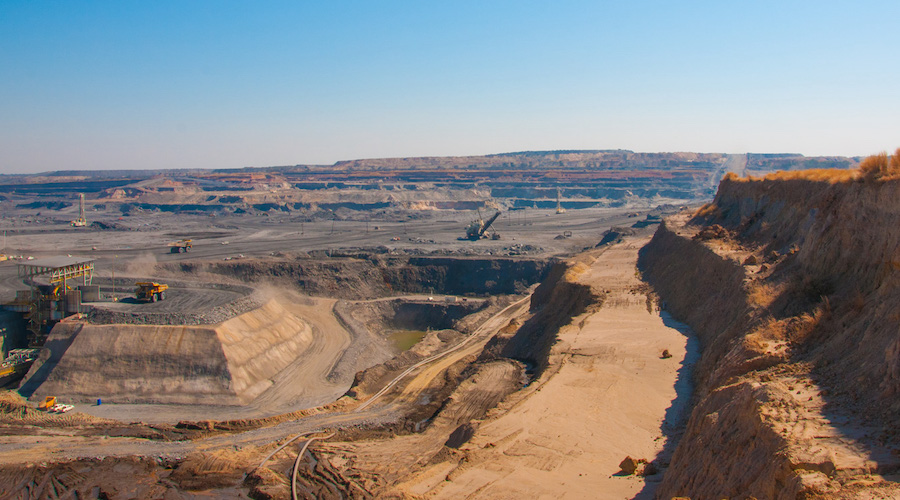What’s driving gold miners’ copper craze?

Gold miners have never been more bullish.
But not on gold — on copper.

Gold miners have never been more bullish.
But not on gold — on copper.
The red metal is one of the driving forces behind Newmont’s takeover of copper-rich fellow gold miner Newcrest Mining. The US$21.2-billion deal, expected to close by year-end, will be the largest yet for the gold sector. And it will more than triple Newmont’s copper output from 100 million lb. this year to 350 million pounds.
Rumour has it that Barrick Gold has been courting First Quantum Minerals, the world’s sixth-largest copper producer and fellow operator in Zambia’s copper belt, according to a Bloomberg report in June.
Even Agnico Eagle Mines, which currently produces very little copper (6.4 million lb. last year versus Newmont’s 84 million lb.), bought half of Teck Resources’ San Nicolas copper-zinc project in Mexico last year.
The world’s top gold producers aren’t the only ones looking to increase their exposure to copper as forecasts from groups such as CRU and S&P Global predict shortfalls of between 4.7 million tonnes and 19 million tonnes by 2030.
“Nearly every gold company we speak to is looking at copper acquisitions,” Michael Scherb, the founder of private equity firm Appian Capital Advisory told The Northern Miner in July.
Why?
Well, there’s certainly increasing recognition that the world is heading toward a major copper crunch. But Scherb points to another driver behind the trend.
“I think what you’re seeing happening is a lot of gold miners going through identity crises at the moment, justifying their existence to investors,” he said.
That’s despite the gold price being near record highs.
Institutional investors in particular have a strong focus on ESG, he explained. “Their risk committees will be asking, ‘Why are we investing into something that moves a lot of dirt to get a very small amount of finished product that doesn’t have an industrial use?’”
Carbon emissions also play a role, says Mark Fellows, CEO and co-founder of ESG consultancy Skarn Associates.
“The gold mining execs are waking up to the fact that their product is not only not very relevant to the energy transition, but that the mining of it could be perceived as a source of non-essential carbon emissions,” he told The Northern Miner by email. “Therefore, there is a quiet consensus building among the larger gold miners that they have to get to net zero ASAP, or risk losing social licence to operate.”
Fellows notes that while gold miners are making inroads on electrifying mobile equipment, some of the bigger companies are heavily exposed to coal-fired power. In addition, gold miners with refractory ore, such as those operating in Nevada (both Barrick and Newmont), rely on energy intensive processes to recover the precious metal.
“Decarbonizing this will be costly, and some aspects may not make economic sense,” he said.
As the leader of a gold miner with substantial copper assets that has also spent close to 30 years in the oil and gas sector, Sherry Duhe, interim CEO of Newcrest Mining, has a unique perspective on investors’ ESG expectations.
Duhe was CFO at Australian liquid natural gas (LNG) producer Woodside Energy before coming over to the gold miner in February 2022 as CFO.
“I was curious to see what the sustainability or environmental pressure would be because obviously in oil and gas, you’re fighting for your right to continue to exist and to be part of the energy transition — even in the LNG space,” she told The Northern Miner in July at the Australian-Canadian Economic Leadership Forum in Toronto.
“What I’ve seen in the gold space, at least with our investor base, is that there is a lot of interest and curiosity around what is your sustainability road map,” including emissions reductions, water and tailings management, interactions with local communities and diversity in the workforce, Duhe said.
“But I have not personally experienced it as pressure. It’s been more curiosity and I’ve actually found that odd coming out of oil and gas because often the portfolio managers are the same people,” she added.
For now, she sees the focus on dividends in the investment community as a bigger constraint than ESG.
While Newcrest investors have “huge enthusiasm” for the company’s high copper exposure, she sees an urgent need for investors to better recognize the role of critical minerals like copper in achieving net zero.
“There is this juxtaposition where investors are saying, ‘I know you need to invest and I know you need to turn capital back into the company, but I have this KPI and I need dividends. So tell me how you’re going to do both.’”
Duhe points to those pressures as a key factor behind the consolidation that’s starting to happen in the sector.
But without unleashing the capital that’s needed to get more copper out of the ground, that won’t be enough to meet coming demand, which Duhe says will require more copper in the next 27 years than produced in the last 125 years.
“We keep going back to the same superannuation funds, traditional institutional investors, when in fact there are many billions and trillions of dollars sitting out there begging to find a home on green energy. But I think we haven’t broadly made that connection between the fact that critical minerals are the starting ingredient of green energy.”
According to S&P Global, the deal value of base metals M&A last year (97% of that focused on copper) jumped 65% to US$14.6 billion, outshining gold’s deal value of US$9.9 billion. With copper M&A showing no signs of waning this year, gold miners will be stepping up their search for the metal that soon, no one will be able to get enough of.